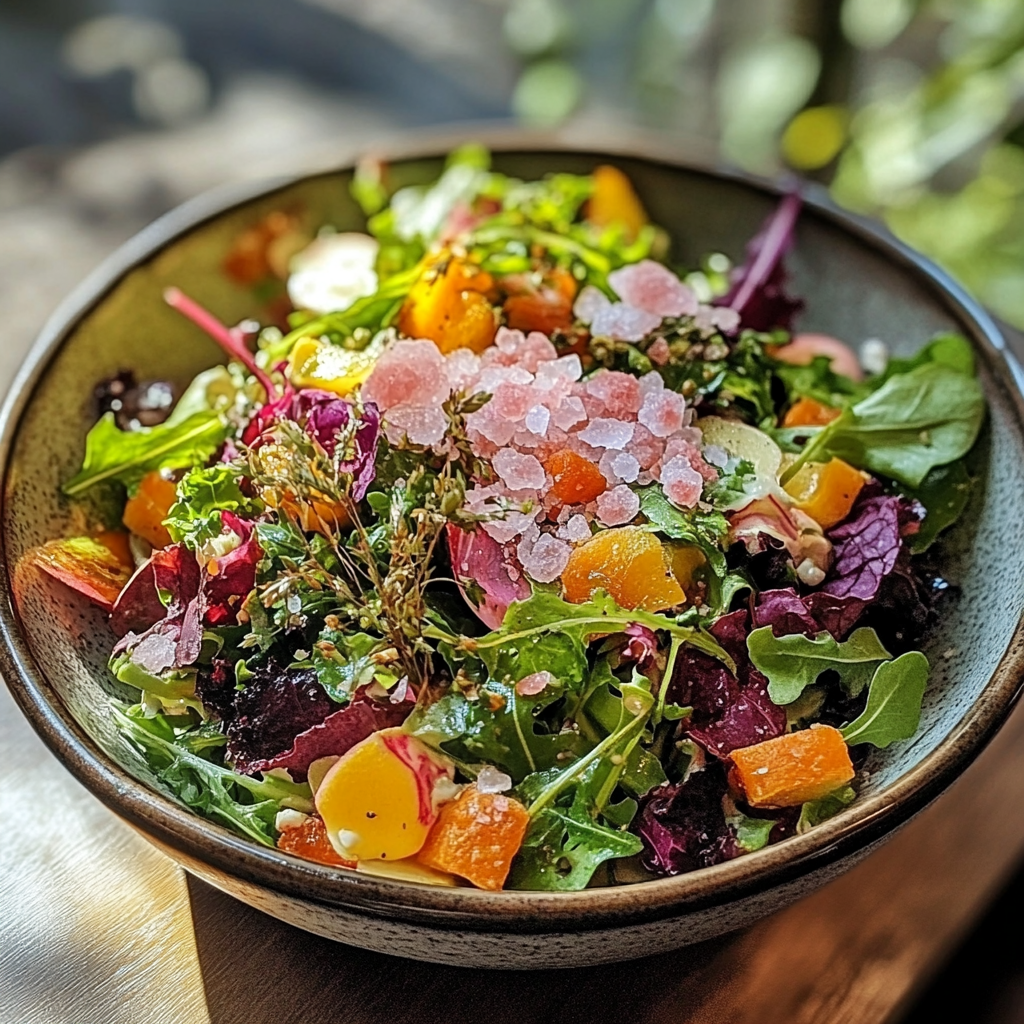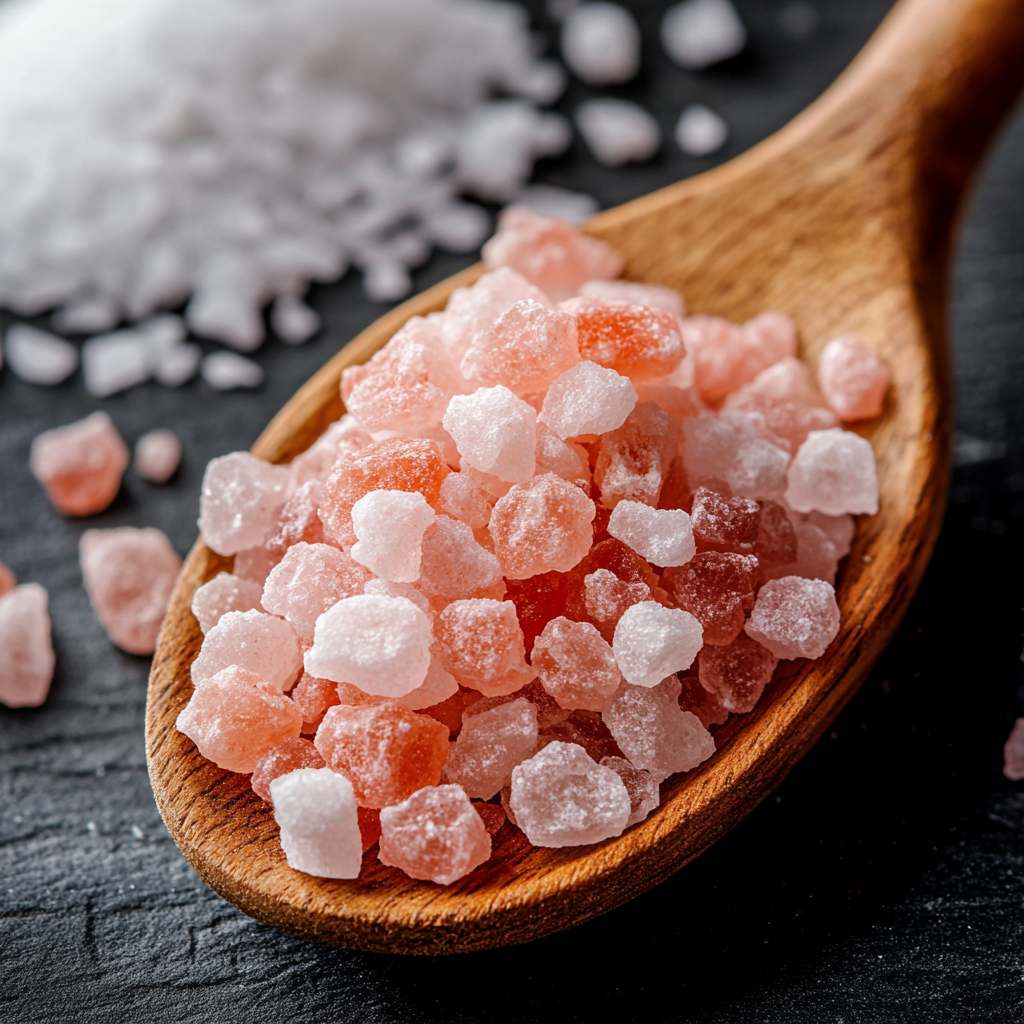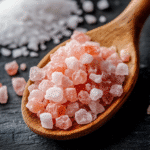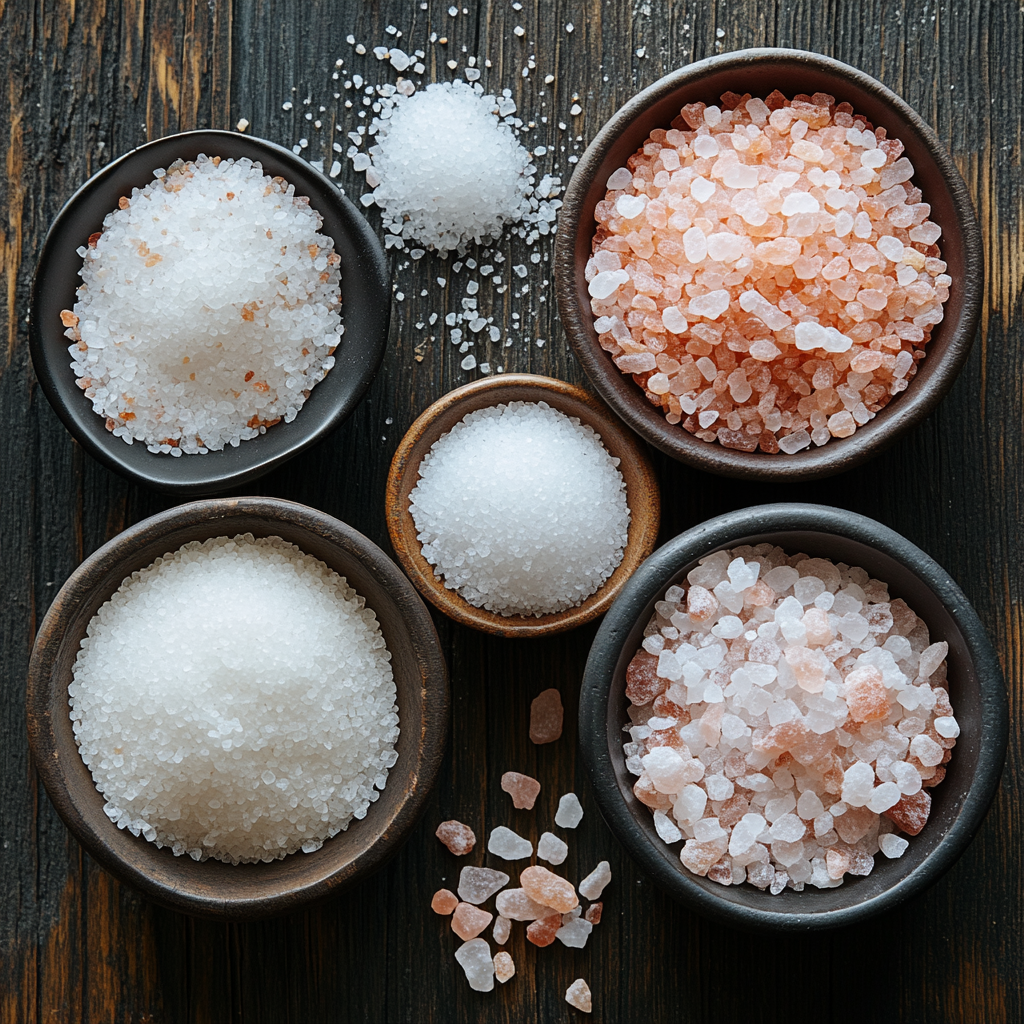Curious about the difference between salt and pink salt? You’re not alone. In this article, we’ll explore what makes pink salt so special, how it compares to regular salt, and what to watch out for when using it. From its mineral-rich profile to its culinary uses, “salt pink salt” isn’t just a pretty seasoning—it’s a topic full of flavor and facts. You’ll learn about the four main types of salt, the benefits and myths of pink Himalayan salt, and how it fits into a balanced kitchen. Let’s dig into this essential ingredient and discover how it elevates more than just taste.
Table of Contents
Salt Pink Salt in My Kitchen Journey
From family meals to flavor upgrades
Hi! I’m Alice—so happy you’re here. My love for cooking started in a warm, bustling kitchen where salt played more than a flavoring role—it was tradition. But the first time I saw pink Himalayan salt in a glass jar at a farmer’s market, I was mesmerized. That soft blush tone and promise of health benefits pulled me in instantly. I brought it home, swapped it into my favorite potato recipe, and was blown away by the subtle depth it added.
That moment opened up a new world of experimenting. I started comparing table salt with pink salt in soups, roasted veggies, even salad dressings. The flavor was slightly earthier, and I loved knowing it contained trace minerals. It became a small but meaningful upgrade in my kitchen, and now I can’t imagine cooking without it.
Why salt pink salt matters more than you think
When we say “salt,” most people think of plain white granules. But salt pink salt introduces a stunning variety—visually and nutritionally. Derived mostly from ancient sea beds in the Himalayas, it’s minimally processed and rich in minerals like magnesium, potassium, and calcium. While some claims are overhyped, it undeniably brings an artisanal flair and trace benefits to your meals.
Salt pink salt is more than a seasoning—it’s a cultural and culinary cornerstone. And pink salt takes that to a new level. From basic eggs at breakfast to elevated roasts for dinner, it subtly transforms taste and texture. If you’re curious how it compares to other salts like kosher or sea salt, you’re in for a savory ride in the sections ahead.
Don’t forget to check out more inspiration in our low-calorie recipes or browse some classic dinner dishes where salt truly shines.
Comparing Pink Salt vs. Regular Salt
Pink salt vs. regular salt: What’s the difference?
When it comes to salt, most people reach for the standard table variety—clean, white, and familiar. But pink salt? That’s where curiosity meets flavor. The biggest difference between salt pink salt and regular salt lies in processing and mineral content. Table salt is heavily refined and often includes anti-caking agents and added iodine. In contrast, pink Himalayan salt is minimally processed, meaning it retains up to 84 trace minerals naturally present in the ancient salt deposits of the Himalayas.
Those trace minerals are what give it the distinctive pink hue. They include calcium, magnesium, and potassium—minerals our bodies already need in small amounts. However, don’t be misled: the quantities are very low and shouldn’t be relied on for nutrition. The flavor, though? It’s a touch bolder and less sharp than table salt, which can make a big difference when seasoning vegetables, fish, or grains.
Is pink salt actually better for you?
That depends on what you mean by “better.” If you’re looking for a more natural, unprocessed salt with no additives, pink salt is a great choice. It’s ideal for those who want to avoid synthetic ingredients and prefer cleaner cooking. However, from a purely nutritional standpoint, both pink and regular salt contain roughly the same amount of sodium—about 98%. That means moderation is still key, no matter which salt you choose.
One thing to watch out for: pink salt doesn’t contain added iodine, which is important for thyroid function. If you cut out iodized table salt completely, make sure you’re getting iodine from other foods like seafood, eggs, or dairy.
Want to explore more seasonings? Check out our dinner ideas that pair perfectly with pink salt, or dive into our fresh lunch recipes for balanced, flavorful meals.
Types of Salt and When to Use Them
The 4 types of salt you should know
If you’ve ever stood in the spice aisle staring at a dozen kinds of salt, you’re not alone. Understanding salt types helps elevate your cooking—and salt pink salt is just the beginning. Let’s break down the big four:
- Table Salt: This is your everyday white salt—fine, uniform, and iodized to help prevent iodine deficiency. It dissolves quickly, making it perfect for baking or seasoning water for boiling pasta. But because it’s highly refined, it lacks the depth of flavor found in natural salts.
- Kosher Salt: Favored by professional chefs, kosher salt has larger, flaky crystals that make it easy to pinch and control. It’s excellent for seasoning meat, dry brining, and drawing out moisture. Its clean, pure flavor makes it a versatile staple in savory cooking.
- Sea Salt: Harvested from evaporated seawater, sea salt retains natural minerals and comes in coarse or fine textures. It offers subtle briny notes and works beautifully for finishing dishes or adding a delicate crunch.
- Pink Himalayan Salt: The star of this article—mined from ancient sea beds in Pakistan, it brings trace minerals, visual appeal, and a slightly earthy taste. Use salt pink salt as a finishing salt, in grinders, or even for presentation on salt blocks.

How to cook with different salts
Each salt plays its own role in the kitchen. Table salt dissolves quickly in soups or batters. Kosher salt offers control when seasoning meats or vegetables. Sea salt adds a textural finish. And pink salt? It’s ideal for gourmet presentation and gentle seasoning that doesn’t overpower.
For a salt that enhances flavor without overshadowing it, pink salt is my go-to for roasted root vegetables and grilled chicken. It pairs beautifully with the clean flavors in our low-calorie dishes or as a finishing touch on these breakfast staples.

The Disadvantages of Pink Salt
Is pink salt all hype? Let’s be honest
Pink Himalayan salt is beautiful, natural, and artisanally marketed—but is it as magical as some make it seem? Like any trendy food, it has its myths. One of the most common is that salt pink salt can detox your body or dramatically improve health just because it contains trace minerals. While pink salt does contain minerals like magnesium and potassium, the amounts are too small to offer meaningful health benefits unless you’re consuming very large quantities—which you shouldn’t.
Another issue is that pink salt often lacks iodine, a nutrient added to table salt to help prevent thyroid issues. If you’re switching entirely to pink salt and not eating other iodine-rich foods like fish or dairy, you may risk a deficiency over time.
Also, while it feels more “natural,” pink salt isn’t inherently safer or “cleaner.” In fact, because it’s mined, it may contain impurities or heavy metals in some batches. Reputable sources test their salt, but quality varies by brand. Always look for food-grade labels and trusted sourcing when buying.
When too much pink salt becomes a problem
Like all salts, pink salt is still primarily sodium chloride—around 97–98%. High sodium intake is linked to high blood pressure, kidney strain, and cardiovascular issues. So no matter how pure or pretty it is, overusing pink salt poses the same risks as overusing any salt.
The key? Use it sparingly and intentionally. Let it enhance—not dominate—your food. It’s a finishing touch, not a health fix.
Looking to pair your seasonings—especially salt pink salt—with clean eating? Try our low-calorie meals or explore refreshing lunch recipes where salt plays a smart supporting role.

Conclusion
Pink salt isn’t just a pretty face in the spice rack—it’s a culinary tool with unique flavor and texture. While it doesn’t offer miracle health benefits, it can be a cleaner, more natural alternative to processed table salt. Use it wisely, and it can elevate your dishes beautifully.
Whether you’re making a hearty roast or sprinkling over avocado toast, salt pink salt earns its spot in your kitchen. Just remember: with salt pink salt or any ingredient, moderation, quality, and curiosity are key.
Looking for recipes to try your pink salt on? Visit our breakfast ideas and dinner favorites to get started.
for more recipes follow me in page facebook and pinterest .
Frequently Asked Questions About Salt Pink Salt
Is pink salt better than salt?
It depends on what you’re looking for. Pink salt is less processed and contains trace minerals that give it a distinctive flavor and color. However, both pink and regular salt contain similar levels of sodium, so neither is “healthier” in large amounts. If you prefer natural, unrefined ingredients, pink salt is a great option.
Is pink salt real salt?
Yes, pink Himalayan salt is 100% real salt. It’s mined from ancient sea beds in the Himalayan region and primarily made of sodium chloride, just like table salt. What makes it different is the presence of trace minerals and its lack of additives like anti-caking agents or iodine.
What are the 4 types of salt?
The four main types of culinary salt are:
Table Salt – refined, iodized, dissolves easily
Kosher Salt – coarse, flaky, great for seasoning meats
Sea Salt – minimally processed, retains ocean minerals
Pink Salt – mined, mineral-rich, earthy flavor
Each has its own purpose in the kitchen, so it’s worth trying them all in the right context.
What is the disadvantage of pink salt?
The main downside is the lack of iodine, which is essential for thyroid health. Pink salt also offers only trace amounts of minerals, so its health claims are often overstated. Plus, like any salt, overuse can lead to high sodium intake, raising risks for high blood pressure and heart disease.

Salt vs. Pink Salt: Revealing the Better Choice for Your Kitchen
- Total Time: 0 minutes
- Yield: N/A
Description
Salt pink salt: A guide to differences, uses, and health impact. Learn when to use pink Himalayan vs table salt in your recipes.
Ingredients
Table salt
Kosher salt
Sea salt
Pink Himalayan salt
Instructions
1. Use table salt for baking and boiling water.
2. Season meats with kosher salt for better control.
3. Finish salads or fish with sea salt for texture.
4. Use pink salt for its visual appeal and subtle mineral taste.
Notes
Pink salt lacks iodine—balance your diet accordingly.
Use each salt type according to its strength and texture.
Quality matters more than marketing when choosing salts.
- Prep Time: 0 minutes
- Cook Time: 0 minutes
- Category: Salt Guide
- Method: Educational
- Cuisine: Universal
Nutrition
- Serving Size: N/A
- Calories: 0
- Sugar: 0
- Sodium: 2300
- Fat: 0
- Saturated Fat: 0
- Unsaturated Fat: 0
- Trans Fat: 0
- Carbohydrates: 0
- Fiber: 0
- Protein: 0
- Cholesterol: 0

